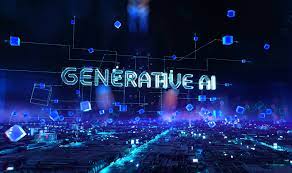By Mr. Muddassar Nazar
‘One size fits all’ approaches to schooling have long since passed. The necessity for better teaching strategies is highlighted by the fact that traditional educational paradigms are no longer appropriate given the changing needs and demands of students. Gamification has revolutionised traditional learning methods and become a powerful tool in education. This innovative method transforms learning into a gaming experience by incorporating game design principles and mechanics into educational activities. As a result, a more engaging and immersive learning environment that motivates students to participate fully is created.
The IMARC Group projected that the global market for game-based learning would be worth $18.4 billion by 2023. From 2024 to 2032, the market is expected to increase at a 15.8% compound annual growth rate (CAGR) and reach $71.7 billion. Factors such as the increasing demand for improved learning environments, improved educational outcomes, individualization, and flexibility are driving the expansion of game-based learning.
Gamification in the classroom: transforming the way students learn
Collaborative education: Teachers and parents find it difficult to maintain children’s interest for extended periods, especially in light of the short attention spans of the current generation. This is where the use of dynamic and captivating teaching strategies, like game-based learning, is essential. Using various elements, including points, badges, and leaderboards, encourages student participation and builds a competitive, fulfilling environment that rewards initiative. Their performance is enhanced because of this, which also helps them concentrate and comprehend better.
Enhanced memory: Conventional education was usually dull and focused more on academics than on real-world skills. However, gamification in the classroom enhances student engagement with subject matter by letting them see how learning is applied in real-world situations. They consequently get a deeper understanding of the topic, which enhances their recollection of the information. It can be challenging to keep pupils interested, especially when learning is done virtually. This is where gamification comes into play, providing young minds with more stimulating learning opportunities that support simultaneous learning, enjoyment, and retention.
Practical educational experience: Gamification offers immersive, interactive learning experiences that bridge the gap between academic knowledge and real-world application. Through the obstacles and rewards of game-based learning, students can hone their abilities in a safe setting. Through practical experience, they enhance their critical thinking and problem-solving skills and get ready for future difficulties in their careers. Furthermore, it provides them with all the tools they need to apply their newly gained skills as effectively as possible in real-world scenarios.
Game-based education: What lies ahead?
The advent of novel ideas like game-based learning has profoundly altered the way that people think about education. This teaching technique gives students an engaging and enjoyable learning environment where they may practise their abilities and gain valuable knowledge, freeing up their minds to concentrate on a deeper comprehension of the subject matter.
Game-based learning is expected to become more common in the future due to its increasing popularity. With an eye towards 2024 and beyond, this transformative learning strategy will continue to advance, changing the educational landscape to become more accommodating, inclusive, and aware of the diverse needs of students.

(The author is Mr. Muddassar Nazar, CEO, Birla Brainiacs, and the views expressed in this article are his own)





